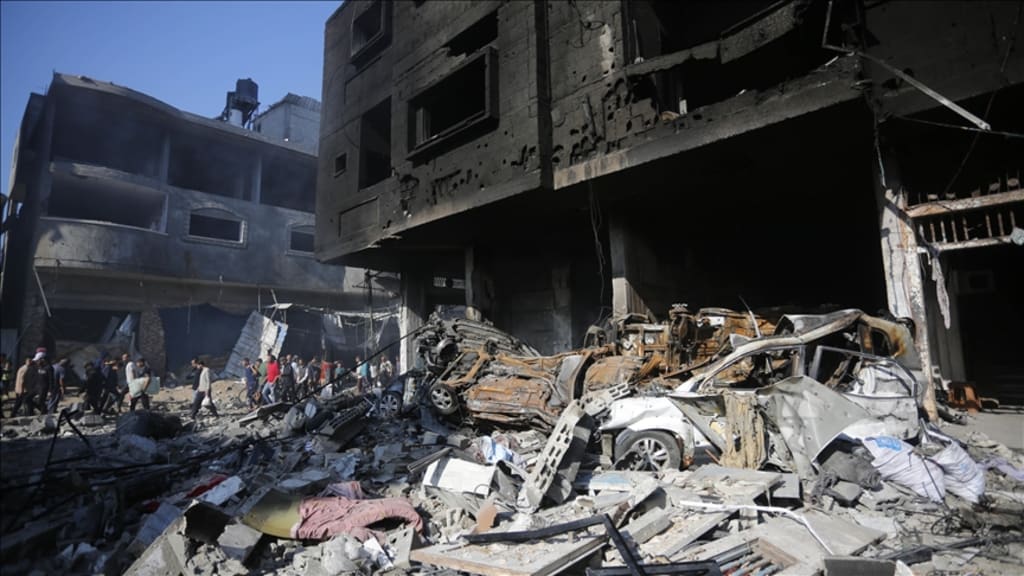Israel and Gaza
How Israel and Gaza Were Pushed Into War

The recent outbreak of conflict in the Middle East, specifically between Israel and Palestinian groups, marks a significant shift from the brief era of peace and stability that was touted just weeks before the violence erupted. This article aims to trace the roots of the conflict, examining key historical events, geopolitical decisions, and the volatile situation that led to the current crisis. The geopolitical situation in the Middle East has been complex and contentious for decades. The roots of the current conflict can be traced back to the aftermath of World War I when the British Empire acquired the territory known as Mandatory Palestine. The establishment of Israel in 1948 further fueled tensions between the Jewish and Arab populations, leading to a series of wars and ongoing disputes over borders.
The Six-Day War in 1967 resulted in Israel gaining control of additional territories, including the West Bank, Gaza Strip, East Jerusalem, and the Golan Heights. The United Nations Security Council Resolution 242 called for Israel's withdrawal from these occupied territories, setting the stage for continued tensions. Israel's approach to the territories acquired in 1967 has been varied. While the Sinai Peninsula was returned to Egypt in 1979 in exchange for a peace treaty, Israel unilaterally annexed East Jerusalem and the Golan Heights, actions widely rejected by the international community.
The Oslo Accords of 1993 and 1995 aimed to establish the Palestinian Authority as an interim governing body with the eventual goal of creating an independent Palestinian state. However, the implementation of these accords faced numerous challenges, leading to ongoing disputes over control and autonomy in the West Bank and Gaza Strip. The recent conflict escalated when various Palestinian militant groups, led by Hamas in the Gaza Strip, launched a coordinated offensive against Israel. This resulted in a devastating day of violence, including rocket attacks and infiltrations into Israeli villages, prompting Israel to respond with a declaration of war and a massive mobilization of reserve troops.
As of the latest developments, Israel has imposed a complete siege on Gaza, cutting off essential resources such as electricity, fuel, telecommunications, water, and medicine. The Israeli Air Force initiated a relentless aerial campaign, and ground forces have launched a full-scale invasion, encircling Gaza City. The casualty toll continues to rise, with thousands of Palestinians killed and tens of thousands wounded. The resumption of conflict in the Middle East underscores the deeply rooted geopolitical complexities and historical grievances that persist in the region. The current crisis, sparked by a series of events in 2023, highlights the urgent need for international diplomacy and a comprehensive, sustainable solution to address the root causes of the conflict and pave the way for lasting peace in the Middle East.
The geopolitical landscape in Israel and Palestine has undergone significant transformations, particularly from the Oslo Accords to the Trump administration's "Deal of the Century." This article aims to dissect key events, territorial dynamics, and international responses that have shaped the region over the past decades. The Oslo Accords of 1993 and 1995 laid the groundwork for a potential resolution by envisioning the gradual transfer of Area C, including the West Bank, from Israeli to Palestinian authority. However, the assassination of Israeli Prime Minister Yitzhak Rabin in 1995 disrupted this process, and subsequent leadership changes, particularly Benjamin Netanyahu's rise in 1996, stalled further negotiations. As a result, the promised transfer of control over Area C never materialized.
Israeli settlements in Area C of the West Bank have expanded significantly since the Oslo Accords, with an estimated 230,000 settlers in East Jerusalem and 470,000 in the West Bank. The continued growth of settlements, often labeled as a violation of the Fourth Geneva Convention, further complicates the prospects for a two-state solution. The Gaza Strip, controlled by Hamas since 2007, faces a severe blockade enforced by Israel and Egypt. The blockade, in place for 16 years, has led to dire humanitarian conditions, with critics condemning it as collective punishment. Efforts to pressure Hamas into moderation or collapse have proven unsuccessful, maintaining a cycle of violence and unrest.
The Trump administration marked a departure from longstanding international norms by officially recognizing Jerusalem as Israel's capital in 2017 and endorsing Israel's annexation of the Golan Heights in 2019. These moves, criticized for undermining international law, set the stage for further shifts in the Israeli-Palestinian conflict. In January 2020, the Trump administration unveiled the "Deal of the Century," proposing a two-state solution with conditions favoring Israel. The plan was met with mixed reactions, with some Arab nations expressing openness, while the Palestinian Authority rejected it outright, viewing it as biased and disregarding key Palestinian demands. As of 2023, Israel's control over territories, settlement expansions, and the humanitarian crisis in Gaza persist, with geopolitical dynamics continuing to evolve. The unresolved status of Jerusalem and the question of a viable two-state solution remain central challenges, emphasizing the need for renewed international diplomacy to address the complexities of the region.





Comments
There are no comments for this story
Be the first to respond and start the conversation.